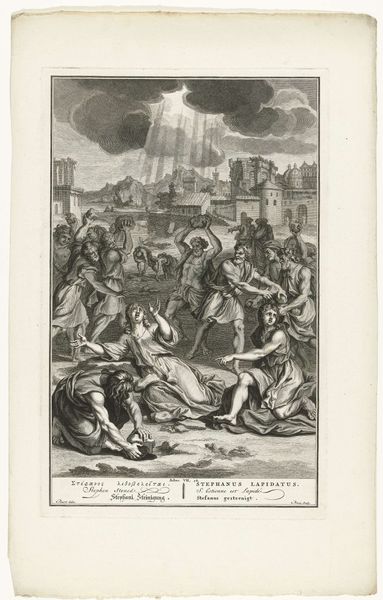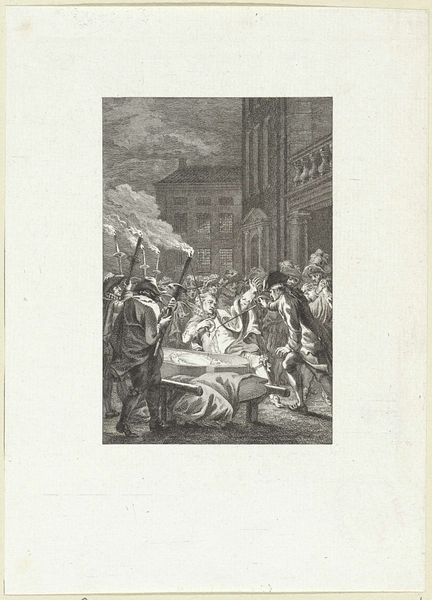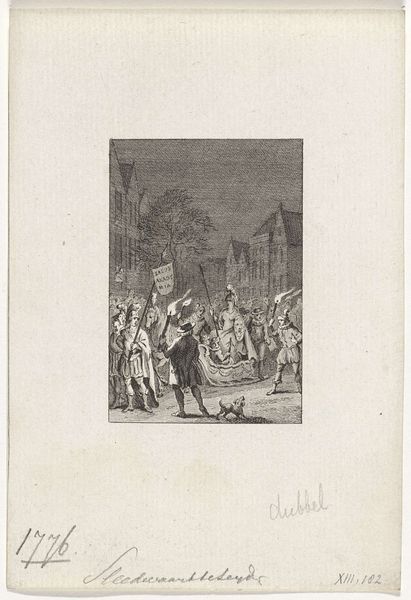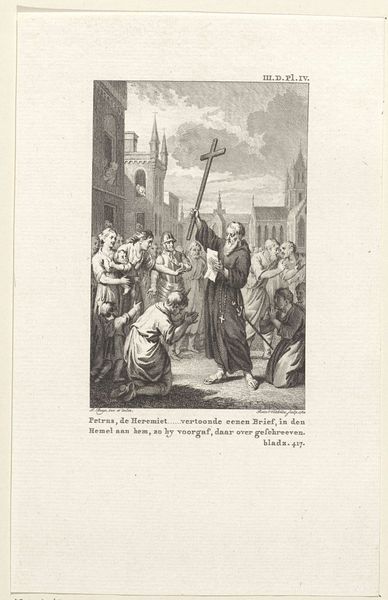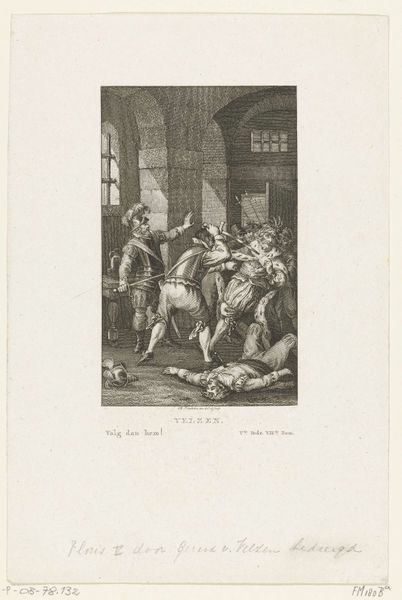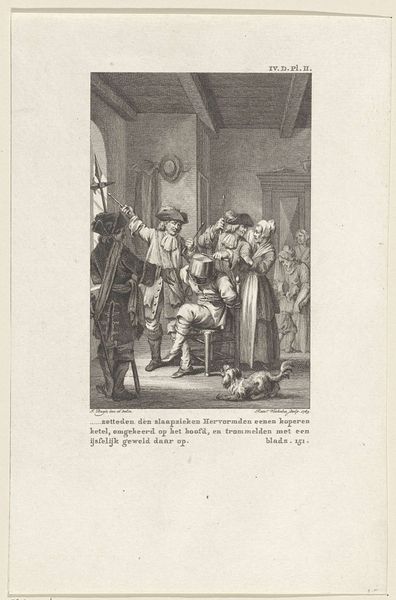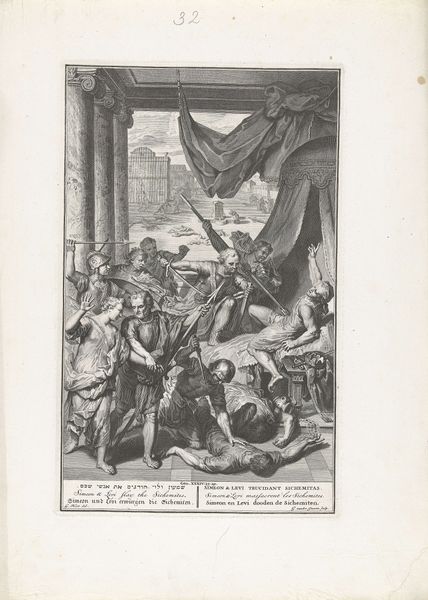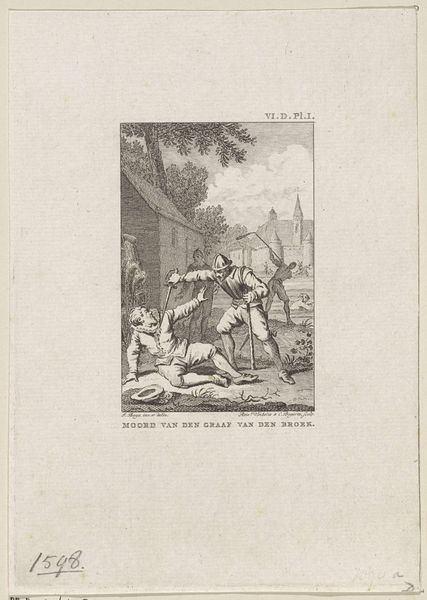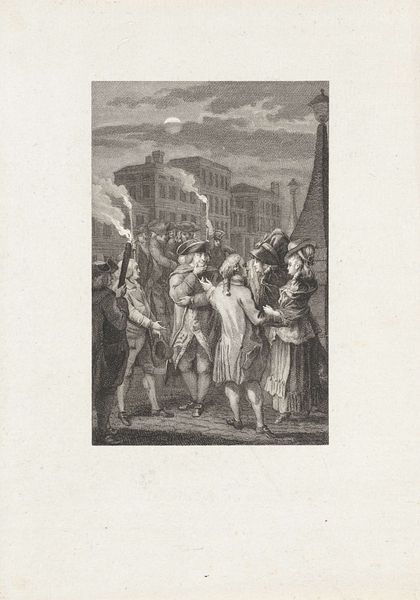
print, etching, engraving
#
narrative-art
#
dutch-golden-age
# print
#
etching
#
old engraving style
#
figuration
#
cityscape
#
history-painting
#
engraving
Dimensions: height 233 mm, width 147 mm
Copyright: Rijks Museum: Open Domain
Curator: This rather affecting scene is "Ferdinand bij het dode lichaam van Cecilia," Ferdinand by the dead body of Cecilia, an etching and engraving created in 1785 by Reinier Vinkeles. It resides here at the Rijksmuseum. Editor: My first impression is of stark drama, of intense grief playing out almost on a stage. The etching has a quality of heightened emotion, doesn’t it? The swirling crowd, the stark contrast... Curator: Yes, I find this print to be rather interesting in its socio-political implications. Its narrative element provides us with an image of public grief and its effect on city life. Observe the scale: within this narrative frame is a potent illustration of a community affected by tragedy, which the public very much experienced during this time. Editor: And what could be more primal than the iconography of death, seen here? Death has forever held the fascination of humanity, an inevitable transformation. The visual motifs are potent: the upturned faces, the grasping hands. All seem to indicate a longing for the soul to ascend, with candles and lights also guiding them forward. Curator: The composition reinforces that central focus. Reinier Vinkeles captures a poignant narrative within the bustling cityscape that is rendered so beautifully by the etching. What also stands out is its existence as a "print." At this time, engravings and etchings like these served as mass communication of information and artistic ideas, particularly because this type of artwork also reproduces stories, and histories to the broader public that may not have had exposure otherwise. Editor: A shared cultural memory captured in lines. The expressions of sorrow become universally understood. These reactions almost act as a reflection of humanity's grappling with mortality, reminding us of our collective vulnerabilities. And these symbols of torches and lights become visual signifiers. Curator: And the image itself plays into broader patterns of civic and cultural expressions. Etchings like this one provide visual material culture, through which emotions are shared and reflected back at society through a visual medium. This print encapsulates the power of art to portray narratives of mourning, community and how tragedy ultimately binds them together. Editor: In its graphic weight, the print, therefore, also achieves a psychological depth. It really does capture those perennial elements that make up how humanity interprets the emotional impact of death, in that particular space, within a given time. Curator: Yes, and ultimately it's the intertwining of art and history, both personal and collective, that allows this engraving to connect so vividly with us centuries later. Editor: Precisely, bringing the visuality of the human heart through time!
Comments
No comments
Be the first to comment and join the conversation on the ultimate creative platform.



